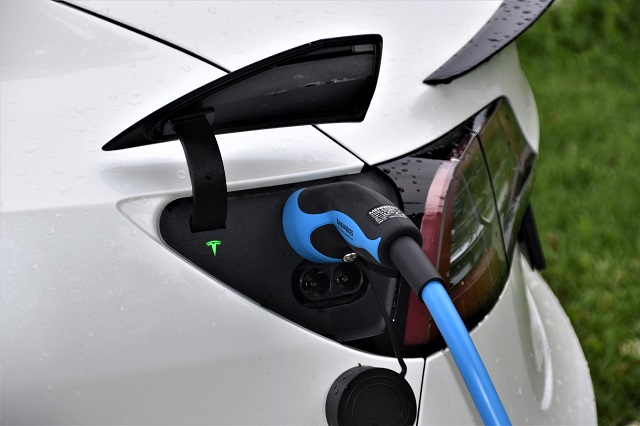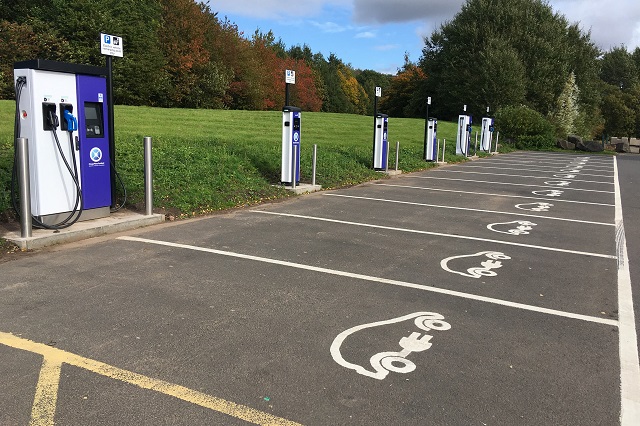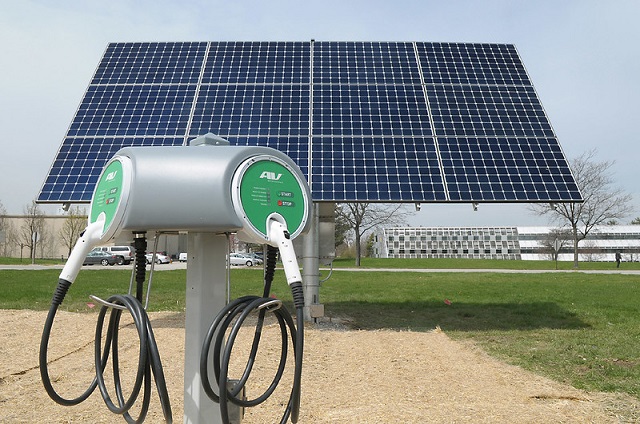
In his first week in office, President Biden signed an executive order that gives federal agencies 90 days to devise a plan that fully transitions the federal fleet’s roughly 650,000 vehicles — including about 225,000 postal vehicles, 173,000 military vehicles and 245,000 civilian vehicles — into “clean and zero-emission vehicles for Federal, State, local, and Tribal government fleets, including vehicles of the United States Postal Service.” While some of these vehicles may include hydrogen, the majority will likely be electric vehicles (EVs). As such, this executive order is a critical first step to getting the on-the-ground momentum for a major electric vehicle transition.
While the federal proclamation may be a simple concept, executing it will be challenging. There is a limited variety of EVs available today, and creating new EV models — even when manufacturers are willing to take on the substantial investments and risks involved — can take more than five years. This can be especially challenging considering that the federal fleet has a massive variety of vehicles of all shapes and sizes, as well as both on- and off-road and light-, medium- and heavy-duty applications. Installing the necessary charging infrastructure and ensuring adequate energy supply could also take many years in areas with grid capacity constraints.
The logistical challenges of procuring vehicles and charging hardware, energizing parking lots, getting permits, installing infrastructure, training drivers and maintenance staff, and much more creates a Herculean task, which is largely why it hasn’t been done yet. To add further complexity, the administration will need to prevent unintended consequences, such as continued emissions from exporting used vehicles, to achieve the best possible environmental, economic and social outcomes.
Here are four recommendations, informed by WRI’s electric mobility work, to achieve those best outcomes from the federal fleet transition plan:
1. Create a National Electric Vehicle Roadmap

The federal fleet, which consists of many types of fleets, is intended to serve various functions across the nation. Many of these vehicles are parked in urban areas, but some are also located in rural locations like national parks and remote national forests. This makes it unlikely that they will be in the necessary range to completely rely on centralized fleet chargers.
Ensuring robust public charging infrastructure will be necessary to keep these new vehicles running, requiring the federal government to be involved in developing a broad and sweeping national public plan. This roadmap should be developed with as many perspectives as possible to ensure it is comprehensive, provides the most holistic solutions and addresses the most pressing and urgent needs through the prudent use of federal funds. To help support policymakers, WRI leverages third-party economic analyses and modeling studies to assess the long-term impact of different EV adoption scenarios.
In the past, WRI has helped inform greenhouse gas and efficiency standards for vehicles, zero-emission vehicle standards, low-carbon fuel standards and purchase incentives as part of our electric mobility work. WRI’s New Climate Federalism project also provides recommendations on the appropriate involvement of state, federal and local governments when transitioning to EVs.
2. Proactively Resolve Electrical Grid Constraints
Charging numerous EVs at the same time and in the same location, such as at a federal fleet facility, could cause issues with the local grid. It could also potentially lead to high electricity costs due to demand charges and expensive energy service upgrades. EV infrastructure planning adds complexity to an already arduous task for most fleet managers and their electric utility distribution engineer counterparts. Long lead times and high connection costs could be a major bottleneck for many of the federal fleet electrification projects that depend on traditional electricity service.
Electrifying federal fleets may require out-of-the-box solutions like on-site microgrids, energy storage, solar and demand charge management strategies to eliminate some of the cost and timeline barriers. The U.S. Department of Energy’s Office of Electricity and many federally funded national labs could play a central role in adapting these approaches to the varying needs and geographies of the federal fleet.
3. Enable Grid Co-benefits

Another option to help alleviate grid constraints is to optimize EV charging loads to match peak renewable energy generation. This will also help tackle climate change by aligning the charging times to overlap with the cleanest forms of energy generation and reducing consumption of fossil fuel-based generation. And because vehicles are typically parked over 90% of the time, they can be used as an alternative to stationary storage by “soaking up” excess renewable generation, preventing curtailment of those resources and supporting new renewable energy deployment.
If the EVs procured by the General Services Administration and others are bidirectionally capable (i.e., they can charge and discharge energy), the excess battery capacity could serve the dual functions of providing energy back to the grid during peak usage periods and creating local resilience benefits for emergency shelters, first responders and hospitals during disaster recovery. The Federal Energy Regulatory Commission (FERC) could play a critical role here in enabling new vehicle-to-grid aggregator wholesale power market participation via FERC Order No. 2222.
4. Permanently Retire Non-electric Federal Vehicles
During the transition to EVs, the federal government will have to phase out thousands of old, non-electric vehicles. If the federal government sells the used vehicles to the private sector, they could get exported to countries without strict pollution or safety standards. This could result in a global net negative outcome in terms of air pollution, climate emissions and road safety. The federal government should plan to permanently remove these fleet vehicles from the roads and recycle those materials as part of this process.
Ensuring the Best Outcomes from the EV Transition
President Biden’s proclamation to electrify the federal fleet dovetails with similar recent actions: an executive order in California, GM’s announcement to electrify all vehicles by 2035 and WRI’s goal to electrify all U.S. school buses by 2030, to name a few. Although it will be difficult, this shift to EVs is a massively ambitious undertaking that can succeed.
While these four recommendations are essential to an effective transition of the federal fleet, they are not the only steps that would benefit the plan. Other fleet transition plan components could include:
- Recommendations for federal loan and grant programs to build out the necessary manufacturing capacity to meet vehicle and charging infrastructure demand.
- Recommendations for a job retraining program for the existing automotive workforce.
- Plans to ensure a just transition for fossil fuel industry workers.
- Supporting policies that ensure that new jobs have livable wages with good benefits and increase the diversity of the automotive and supply chain industry workforce to reduce gender and racial wage gaps.
WRI is tackling these and many other challenges through our electric mobility practice. There are many opportunities to leverage the buying power of the federal government to reduce the supply chain costs of the current EV market and provide the leadership, guidance and investment signals to the industry that are required for an equitable and comprehensive EV transition in a relatively short time.
If the U.S. federal government figures out how to address these challenges, it could provide a massive kickstart to the EV transition and serve as a beacon to many other fleets who aspire to begin their electrification journey, both in the United States and elsewhere. Documenting and publishing lessons learned, co-locating infrastructure, sharing procurement and negotiation services and providing individualized advice could go a long way to helping other fleets electrify. Success from the new administration in this quest could prove to be a victory in addressing climate change challenges and paving the way for broader electric vehicle implementation.
This blog was originally published on WRI’s Insights.
Erika Myers is Global Senior Manager for Electric Vehicles at WRI Ross Center For Sustainable Cities.






